The Best Air Purifiers 2023 - Tech Advisor

Image: Foundry
Since the pandemic, there's been a growing awareness of the importance of home air quality on our health and happiness: pollution doesn't just exist outside and often, indoor air quality is worse.
If you want to breathe cleaner air in your house, getting an air purifier is a solid investment. Air purifiers with a high-quality HEPA filter have been proven to reduce the amount of pollution in the air, although they'll never remove it all entirely. Plus, a purifier with an activated charcoal layer will help to remove harmful gases.
We've reviewed some of the best air purifiers around, so you can find the one that's right for you. While we can't conduct lab-style testing to verify manufacturers' claims, we can tell you how they work, which types of pollution they work best against, if they're noisy or quiet, if they're easy to move around and if we think they made a difference to air quality.
Some of the air purifiers are dedicated appliances, others are multifunctional and also heat or cool the air, or dehumidify it. Some have displays for air quality information and others are app-connected. All of them have been taken home and tested in our homes.
If you want more information on home air quality, we've got articles on how to monitor and how to improve it. And if you want a bit more advice on what to look out for in an air purifier, see which pollutants they can handle and find out what common terms mean, see our buying advice after the round-up.
1. Jya Fjord – Best all-rounder

Pros
- Three air purity measures
- Easy to move, thanks to its wheels
- Smart features
Cons
- No remote
- No handles
- No ioniser
The Jya Fjord is one of the best looking air purifiers we've tested: it's simple, unobtrusive and modern. It's also one of the most comprehensive, with a four-stage purification process. The first layer is a pre-filter for hair and dust mites. The second layer is a HEPA H13 filter for airborne particles such as dust, pollen, mould spores and bacteria. The third layer is activated carbon for smells and harmful gases, such as tobacco smoke and formaldehyde. To top this all off, there's UV sterilisation to kill bacteria and viruses in the appliance.
Jya states that the Fjord will deal with zones from 31m2 to 54m2. Its Clean Air Delivery rate (CADR) is 450m3 an hour, and for the TVOC CADR, 150m3 an hour.
It has a touchscreen control panel, with a display that'll show you the air quality in terms of either PM2.5, PM10, or TVOC.
It also has smart features. It's Apple Homekit, Google Assistant and Alexa compatible. Also, via the app, you can monitor your air quality in the longer-term, with daily, weekly and monthly graphs.
There are four operation modes, including a whisper quiet (18.8dB(A)) sleep mode.
2. Dyson HP09 Hot+Cool Formaldehyde – Best Dyson purifier
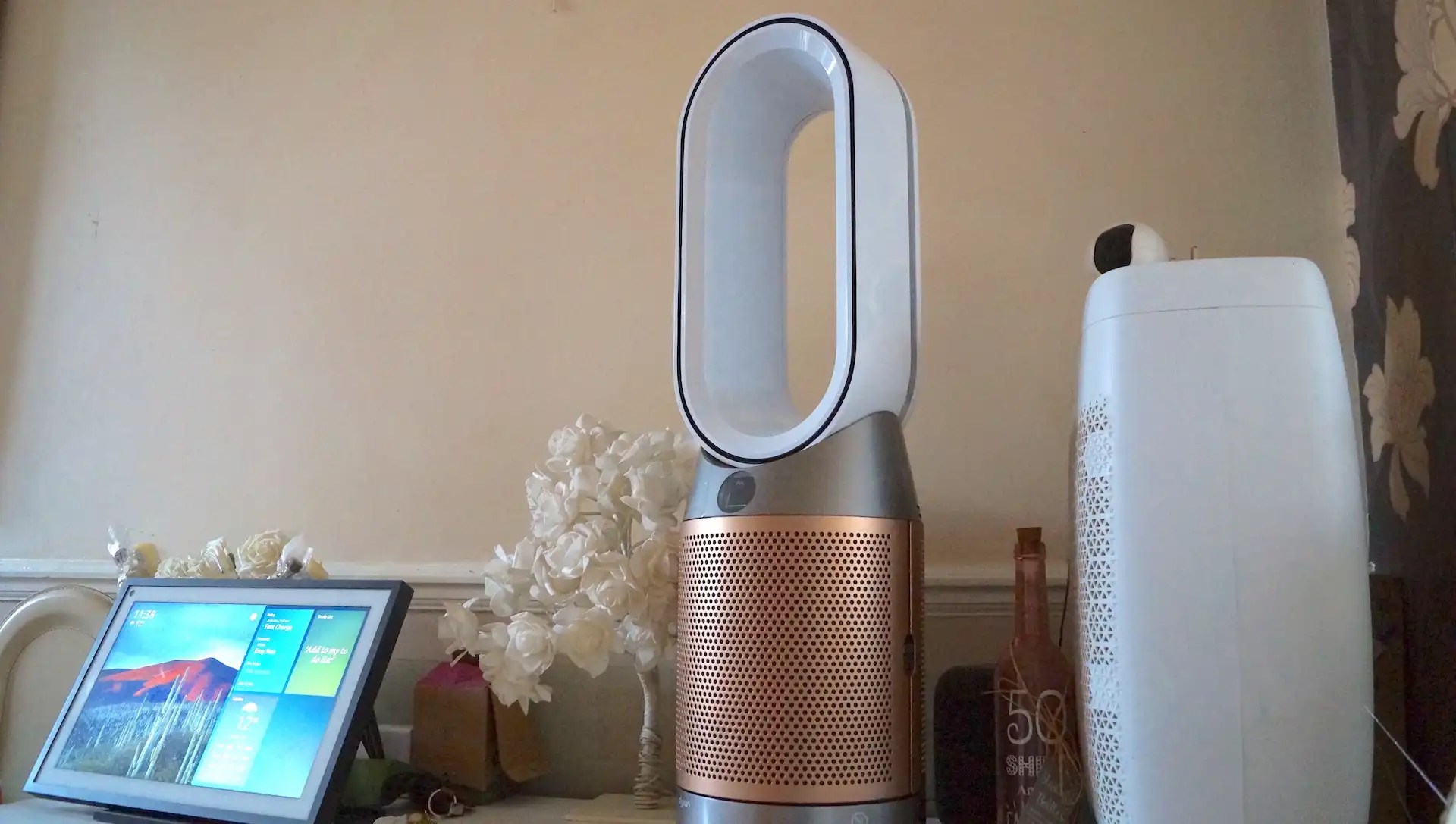
Pros
- Multifunctional
- Smart features
- Stylish appearance
Cons
- Pricey
- Hard to move around
Dyson's latest combined air purifier, heater and fan does it all – and in a more compact form than some of Dyson's other air purifiers. It's also one of the very few combined appliances that will target and break down formaldehyde in the air. This could make it worth it if you are moving into a new home, decorating or renovating.
The appliance has HEPA H13 and activated carbon filters which capture particulates down to 0.1 microns and neutralise odours and gases including volatile organic compounds (VOCs). It'll also detect and track PM2.5, PM10, VOC, NO2 and HCHO levels in real-time, and the current levels will be shown on the LCD display.
Dyson has issues with Clean Air Delivery Rate (CADR) as a measurement of how well air purifiers work in real life. So it's hard to be sure that all of the air that it's moving is being effectively cleaned and it's difficult to compare it against rival appliances. However, we found it be effective in our tests.
If the formaldehyde removal isn't a dealbreaker to you and you don't need the heater, Dyson has other combined air purifiers and fans which could prove more budget-friendly. Have a look at our reviews of the Dyson Purifier Cool Autoreact, Dyson Pure Cool Tower and the Dyson Pure Cool Me.
3. PurOxygen P500 – Includes an ioniser
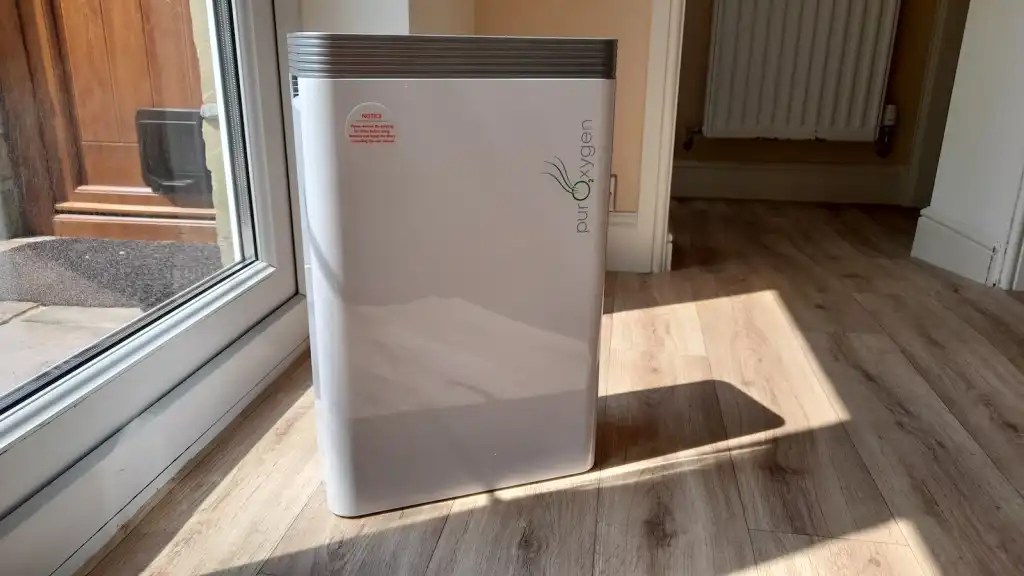
Pros
- Remote control
- UV sanitiser
- Ioniser
Cons
- Not smart-enabled
- No fan adjustment on sleep mode
- No wheels
The PurOxygen P500 is functional looking, but its four-layer filtration system is powerful.
There's a prefilter for particles one micron in size and larger: dust, hair, and dander. The HEPA HII filter catches particles above 0.3 microns in size and 95% to 99% of particles below 0.3 microns. Next, there's an activated carbon layer. The final layer is cold catalyst filtration, to control VOCs (harmful and smelly gases). It's also equipped with a negative ion generator and a UV light.
It will clean spaces from 150-550ft2, so 14m2 to 51m2, and it will clean up to 550ft2 every hours, up to 1650 ft2 in three hours.
There are no smart features but it comes with a remote control. The unit itself also has a light indicator to give at-a-glance air quality information, as well as a numerical indicator.
It's available from a number of places in the US, but if you're in the UK, you can only buy it from Amazon, where its price is extremely high.
4. Dreo True HEPA – Best for small spaces
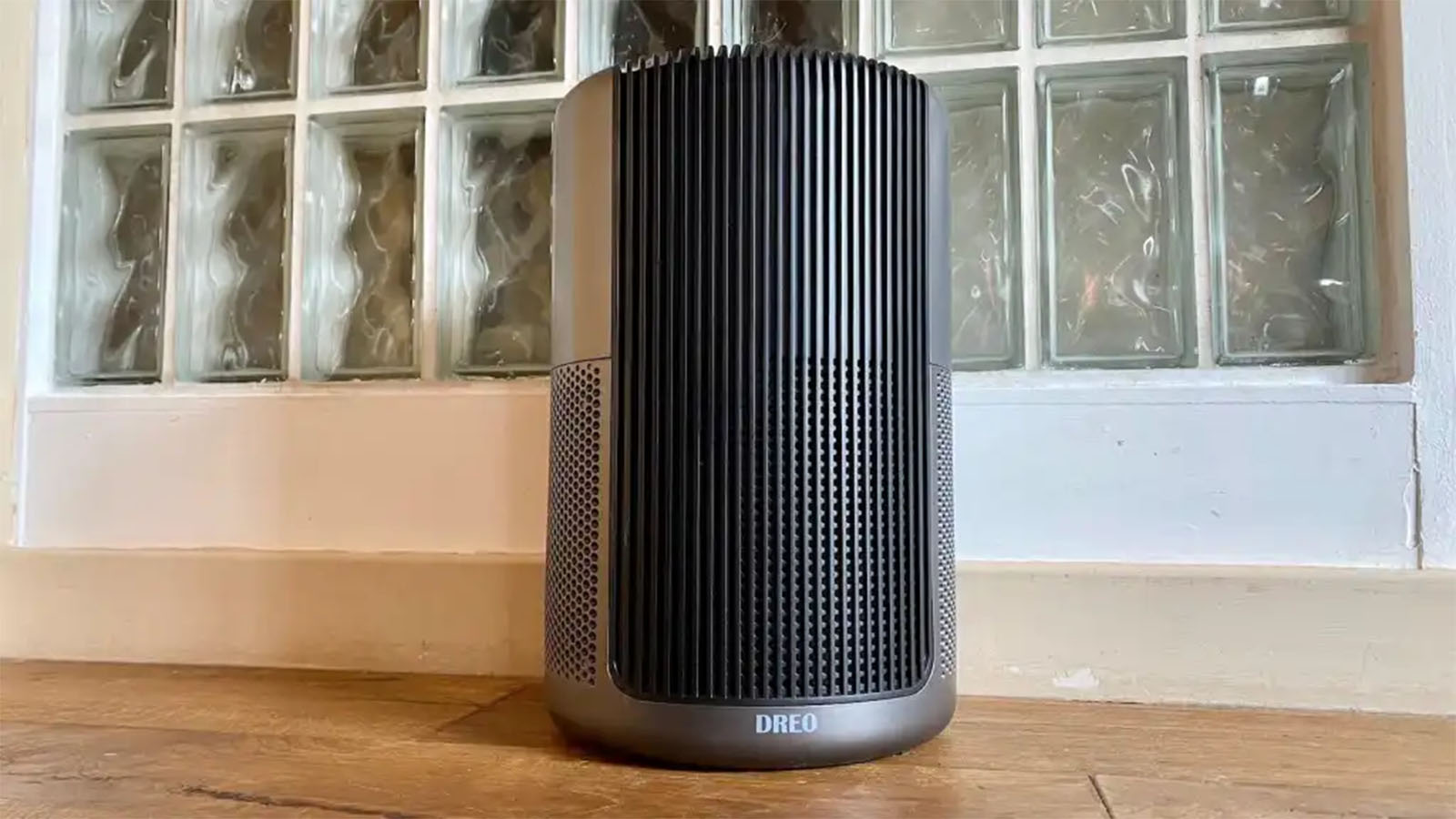
Pros
- Small
- Quiet
- Portable
- Good range of settings options
Cons
- Better suited to smaller rooms
- No smart features
Dreo's True HEPA Air Purifier is a neat black cylinder measuring 25 x 25 x 38.6cm / 9.84 x 9.84 x 15.2in. It's small and light, it's easy to move around or find a spot for. Being a small appliance, its filters are less pricey than rivals as well.
It has a clean air delivery rate (CADR) of 176 cubic feet per minute or 300 cubic metres per hour, and an effective range of 273 sq ft or 25.4m2. This means it's good for smaller spaces only. We think it would work best beside your bed or desk to help with symptoms of hay fever or dust allergies. It won't disturb your sleep or work either, as it's very quiet in use, with an operating volume of 20-54 dB. On its lowest setting, that's very quiet indeed.
It has an H13 True HEPA Filter, which will trap 99.97% of particles down to 0.3 microns, an ultra-fine nylon pre-filter to capture larger particles, and an activated carbon layer which will get rid of bad smells, smoke and harmful gases like VOCs. This makes it a good all-rounder.
It doesn't have smart features, or any kind of display beyond a coloured LED to indicate air quality.
5. Beko air purifier ATP5100I – Best budget buy
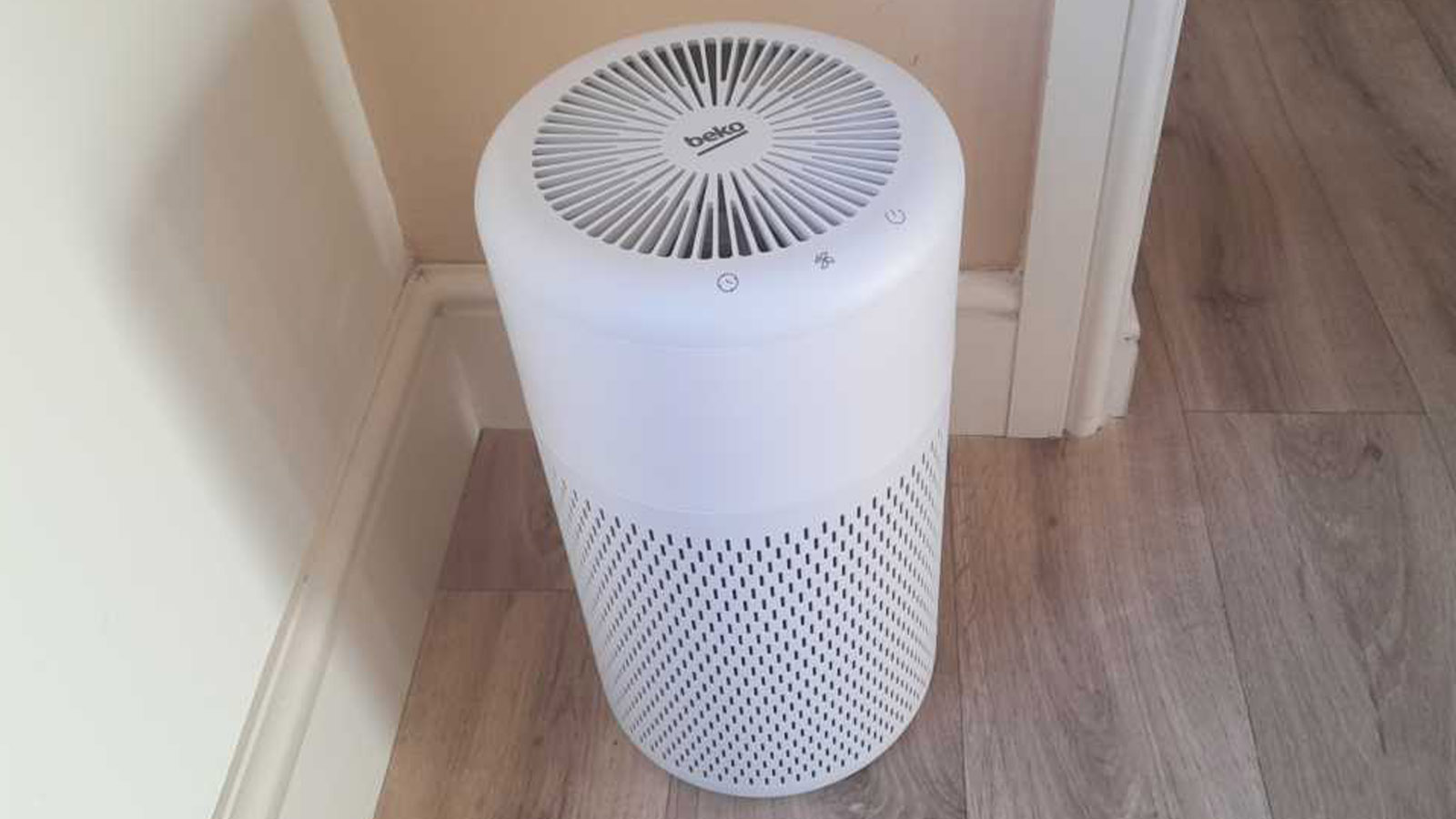
Pros
- Powerful airflow for its size
- Washable pre-filter
- Lightweight
Cons
- No UV cleaning light
- No air quality monitor or display
- No wheels
Forget bells and whistles – Beko's ATP5100I air purifier is a simple appliance. There's no air quality monitor or display and no smart features. But for a very affordable price, it delivers 360° air cleaning, with the removal of 99.9% of bacteria and viruses, and a comprehensive HEPA 13 filter with a carbon layer to trap odour and VOCs. We found that it pumps out a really substantial volume of fresh air.
It has three fan speeds and a basic timer that you can set to 2, 4 or 8 hours. It doesn't have wheels but at 2.34kg, it's easy to pick up and move from room to room.
It's suitable for a 13m2 room – so a bedroom or home office. Beko says it will clean a 36m2 space within 60 mins, assuming a room is three metres high, and reports a clean air delivery rate (CADR) of 110. This is a really well-priced appliance and we think it's very good value.
6. Briiv air filter – Best eco-option

Pros
- Smart features – high quality app
- Biodegradable filters
- Low energy consumption
Cons
- No air quality indicators
- Expensive
- Not very powerful
Briiv is a sustainable air filter that eschews the plastic filters that end up in landfill and replaces them with environmentally friendly alternatives. At the base is an activated carbon layer which can trap matter down to PM2.5, including fine particles and VOCs, and above that a coconut fibre filter that traps larger particles (down to PM5), dust and smoke. On top goes a mass of reindeer moss, which will trap pollen and pet dander.
It's not as powerful as many of the other options in this round-up. Briiv says that on its maximum setting it delivers 53 cubic feet per minute of purified air. That means it only has 20% of the Jya Fjord's air cleaning power. On its top setting, it's pretty noisy too, at 70dB.
However, if you're looking for a gentle air purifier to freshen up a stuffy room, this is one to consider. It's compact at only 16cm wide and just a little bigger than a standard kettle, so it can stand on a countertop or chest of drawers. It won't cost you much to run either: it's just a 5W appliance. And it leaves the air with a fresh, natural smell.
7. Breville 360° Light Protect Air Purifier – Best for the bedroom
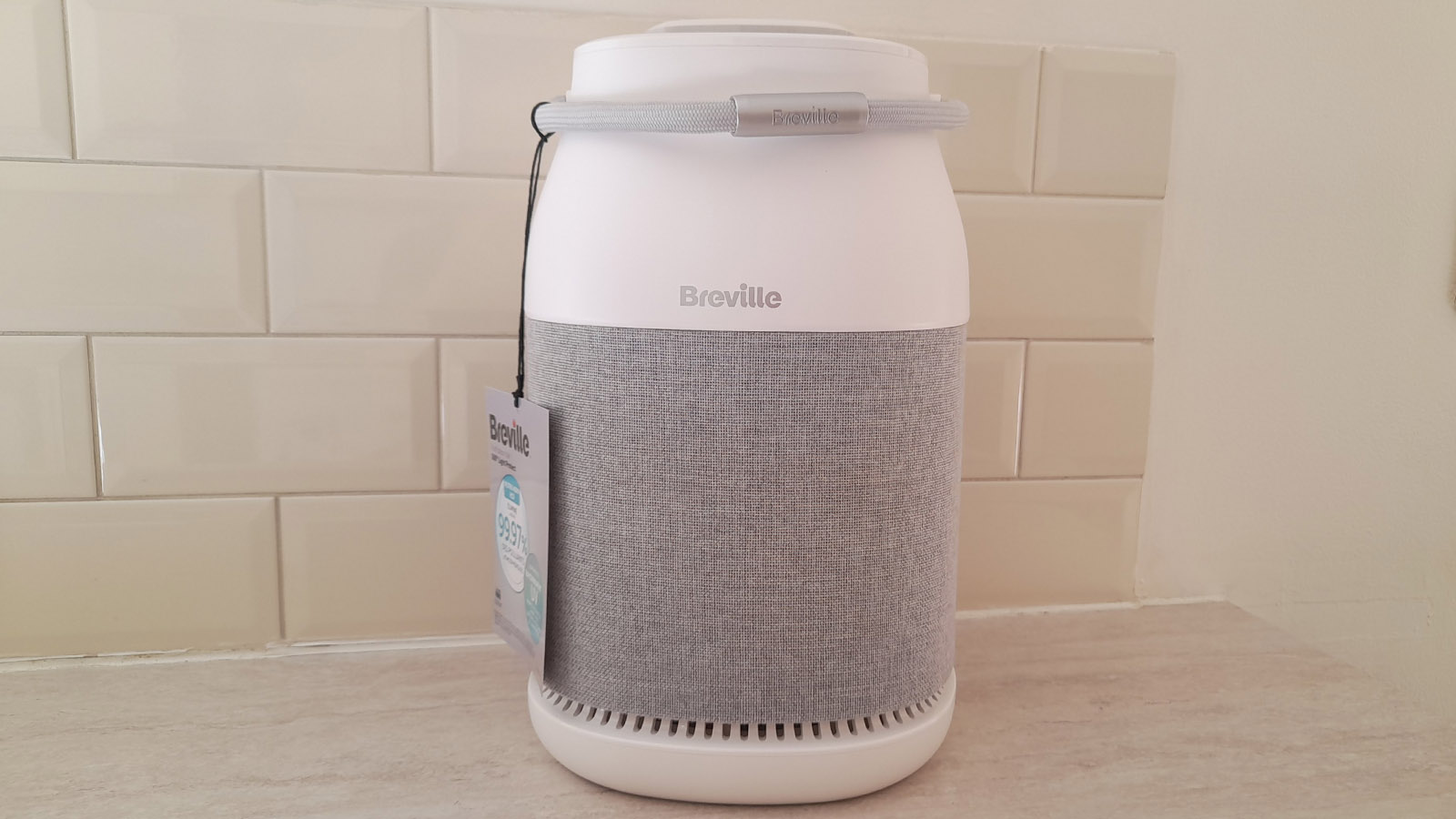
Pros
- Attractive
- Portable
- Good for personal use
Cons
- No air quality display screen
- No remote control
- No smart features
This compact air purifier is only 38cm high, so you could stand it on a desk or bedside table. It's also perfectly portable, with a carry handle on top.
It has six stage filtration, including a HEPA H13 filter and an activated carbon layer for gaseous pollutants. There's an optional UV light to help to sterilise the inside, as well as an ioniser.
Its CADR rates are 191 m3 per hour for smoke, 190m3 per hour for dust and 205m3 per hour for pollen.
It's easy to use as well, with a straightforward control panel and corresponding indicator lights. You can set a timer to switch it off after 4, 8 or 12 hours, turn on a night light and dim the indicator lights in night mode. On its lowest setting, it's only 33dB, so it would be ideal to stop a room getting stuffy while you sleep without disturbing you.
But there's no display to show pollution levels, so if you want to monitor your home air quality, it won't be right for you.
8. Zigma Smart Aerio 300 – Powerful and compact
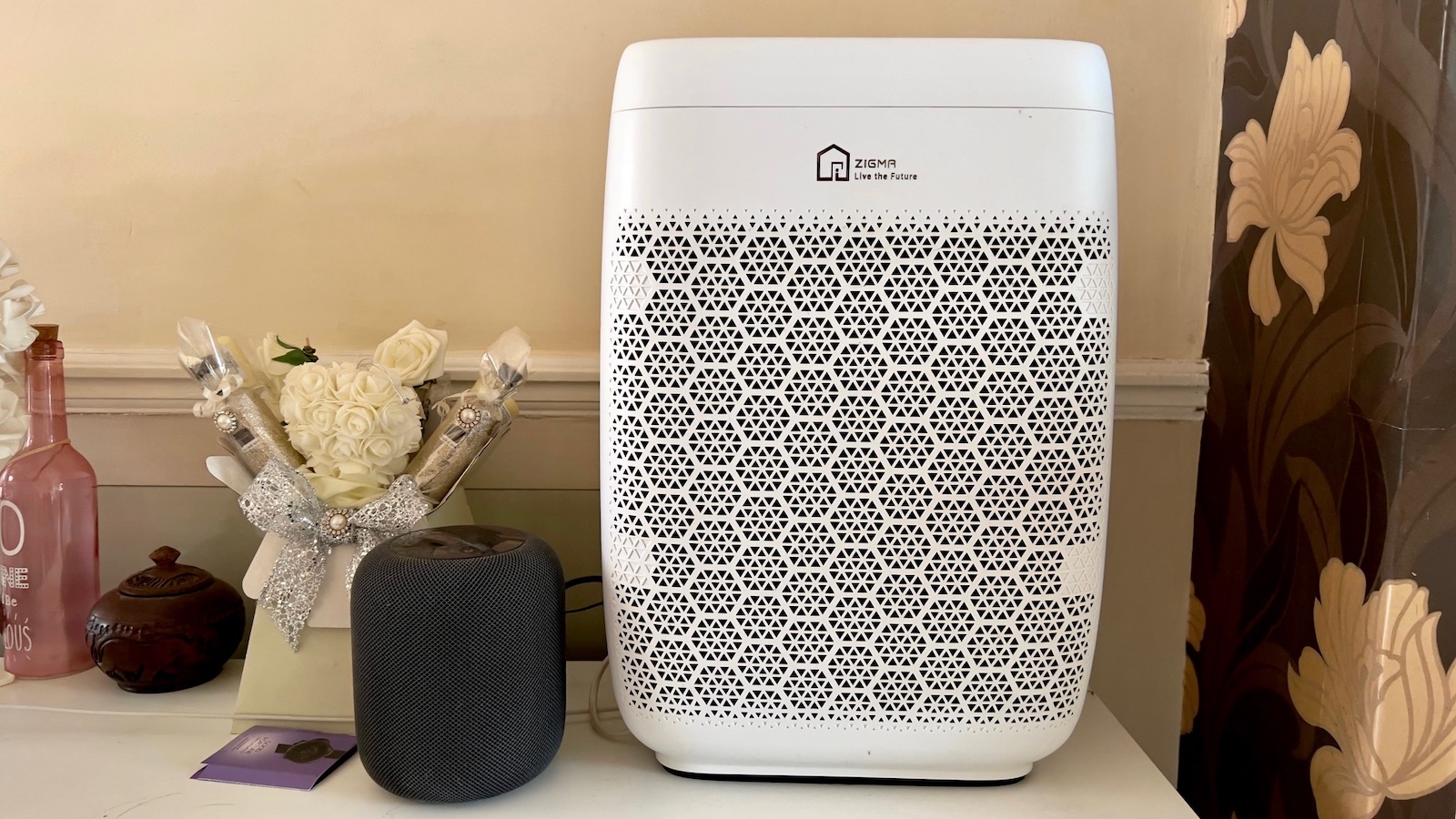
Pros
- Can cycle clean air multiple times an hour
- Compatible with H14 filters
- UV-C lamp and negative ionisation
Cons
- Loud at faster fan modes
- Can't disable annoying chime
- AI mode is exclusive to Zigma app
At 350 x 220 x 495mm, the Zigma will take up a a reasonable chunk of space. It's not a design-led appliance either, although its patterned grille prevents it from being a completely featureless white box. But it's powerful, with the ability to clean a space from 23-40m².
It has a 5-in-1 filter system with an H14 HEPA medical-grade element that filters up to 99.97% of fine dust, pet hair, mites, air pollution, PM 2.5 (pollutants smaller than 2.5 microns) and ultrafine particles under 0.3 micrometres.
That's backed up by an activated carbon filter that helps remove lingering smells like pets, kitchen smoke, cigarette smoke as well as neutralising formaldehyde and other harmful substances. Plus, there's a UV-C LED bulb that aims to kill viruses and bacteria that pass through the appliance.
The Aerio 300 has a Clean Air Delivery Rate (CADR) of up to 330m³ an hour, allowing it to clear up to a 1580 sq ft space within an hour. It also has smart features, and it's reasonably priced as well.
9. Toshiba H13 True HEPA Air Purifier CAF-Z85US(W) – Best display
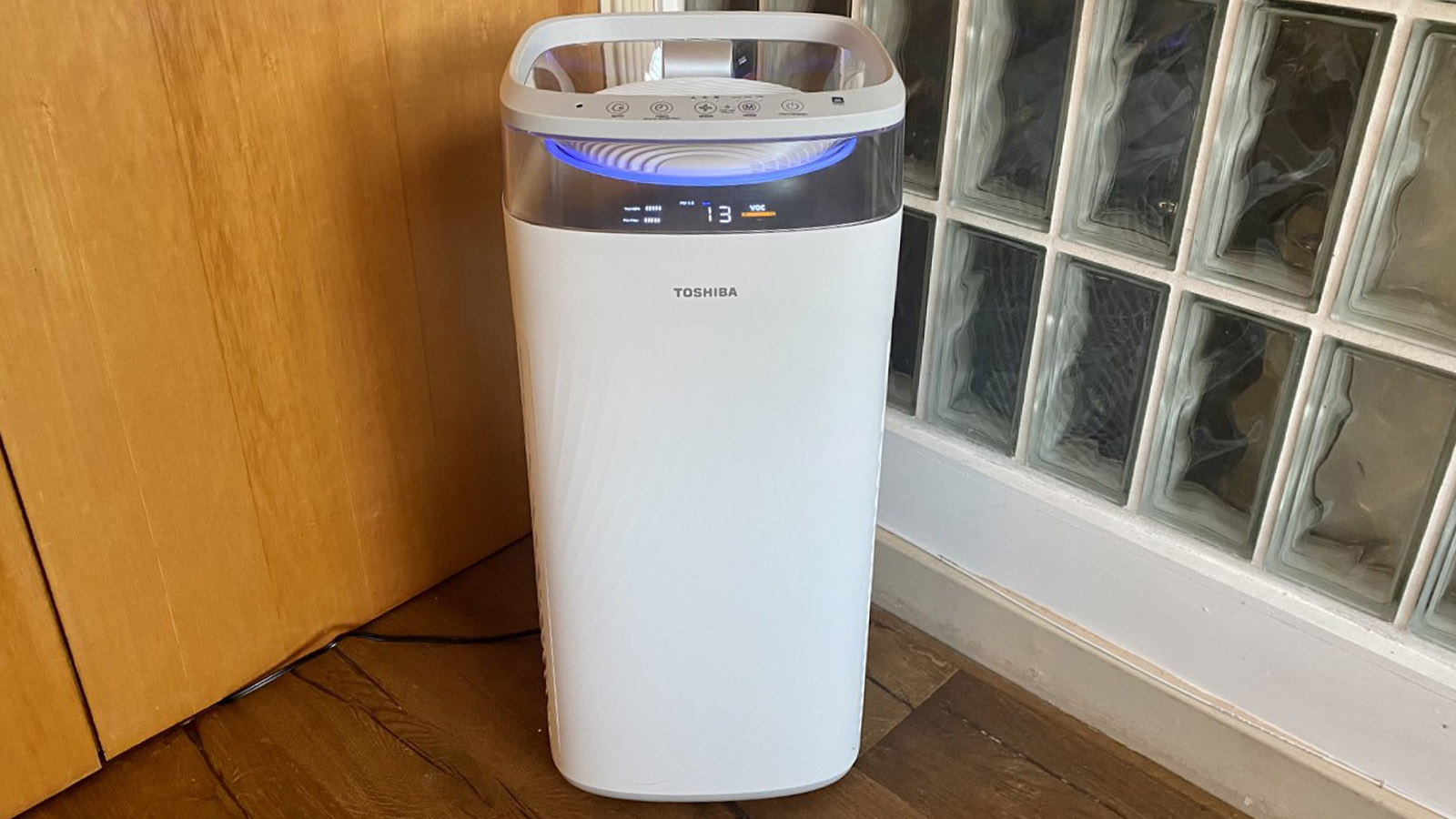
Pros
- Powerful and quiet
- Easy to use
- Smart features
- Complete air filtration
- For large rooms
Cons
- Not an attractive appliance
- Two expensive filters to replace
This large air purifier has a CADR of 312: it can clean 312 cubic feet of air per minute. According to Toshiba, it can clean the air in rooms up to 483ft² five times per hour.
And there's a lot to like about it. It has a three-stage filter, with a pre-filter for pet dander, hair and dust; a HEPA 13 filter for airborne particles down to 0.3 microns, including viruses, pollen, dust mites and mould; and an activated charcoal layer to help with smoke, VOCs and unpleasant odours. In our home tests, it cleared the kitchen of smoke extremely quickly. It also has two air intakes equipped with filters for pulling in air from two directions.
Other benefits are its quiet operation, its mode options and a clear display both on the appliance itself and in the app.
However, it is not an air purifier that will blend in to your home. Its design seems to draw attention to itself, and with an ugly appliance, that's not a good thing. Two filters also means twice the number to replace.
10. Meaco Arete One dehumidifier (25l) – Best dehumidifier and purifier
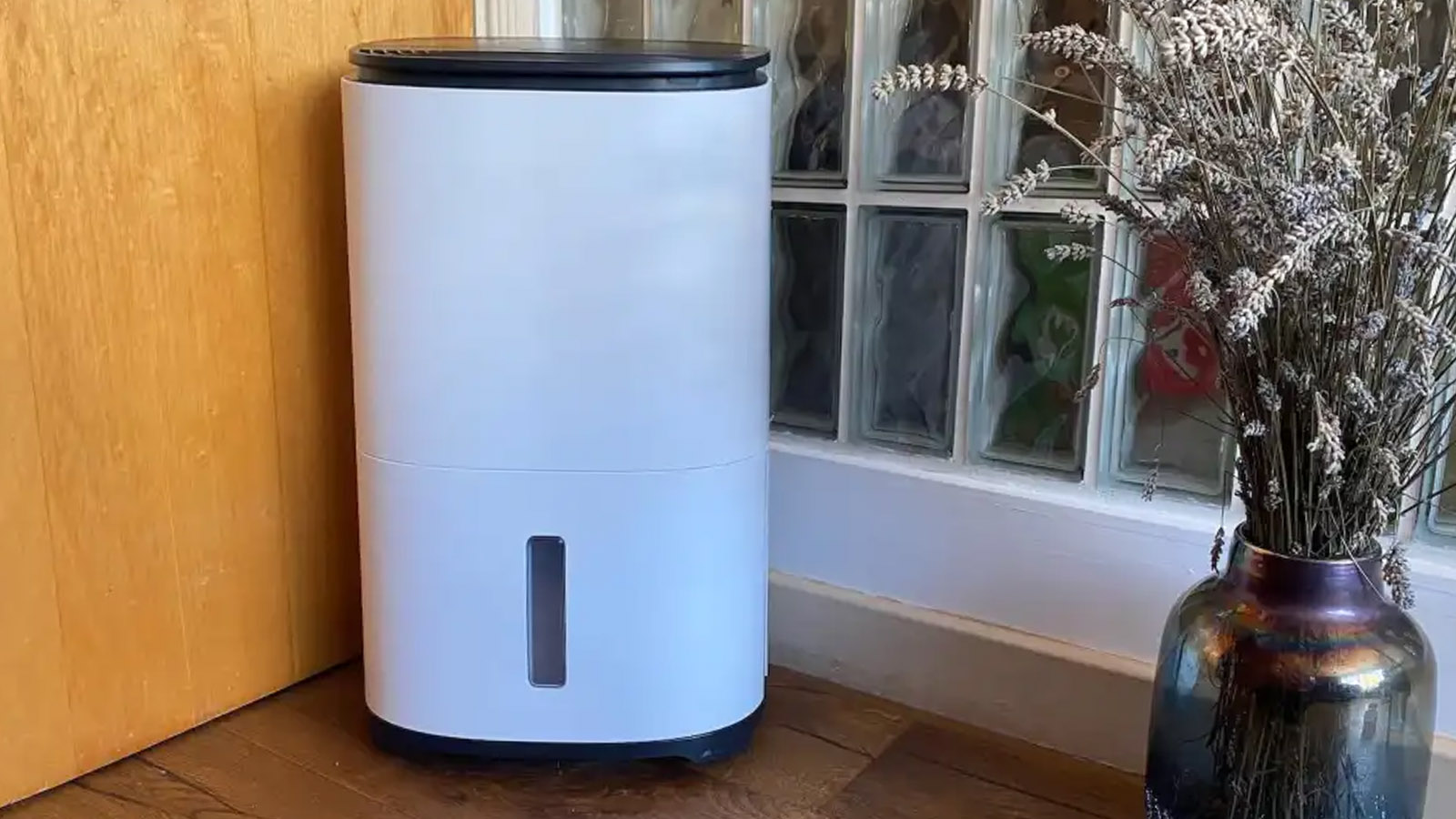
Pros
- Quiet
- Easy to use
- Portable
- Dual use
Cons
- Pricey
- Featureless design
The Arete One is a dehumidifier and air purifier specifically designed for use in the UK. That means it's designed to fit into a smaller space and to work best in temperatures between 5° and 35°C. It has concealed wheels and a carry handle, so it's easy to move around. It measures 60cm x 35cm x 25cm.
We tested the 25L Arete One, which can extract up to 25L of moisture from the air per day at 30°C and 80% relative humidity, which is high performance. It has an easy-to-read control panel but what makes it even easier to use is that it will intelligently adjust to the moisture level in the air and you won't need to tweak it at all. It's very quiet in operation at 42dB.
You can also use it in air purification mode, without the dehumidifier. It's equipped with a washable dust filter, plus an optional medical grade H13 HEPA filter and charcoal filter.
If you want an air purifier but your home has problems with damp or condensation, or if the air gets damp when you air dry clothing, the Arete One is a solid, dual-function option. But unless you have a serious mould problem, you can opt for the smaller size and save some money.
How to buy an air purifier
If you're mulling over different air purifiers, there are some factors you might want to consider before you part with any cash. No air purifier will be 100% effective at cleaning the air, but they can make a noticeable difference to people with allergies and hay fever. They are also handy for reducing cooking odours, as well as lingering paint and cleaning product smells.
Here are some questions to consider before you buy.
How large is the space you want it to clean?
Most air purifier manufacturers will give an optimum room size that their air purifier can clean. This is a good guide, although it may not be perfectly accurate. The key thing is to ensure that the air purifier has enough capacity to clean the air in the room you'll most often use it.
If you're not looking to clear an entire room of paint fumes or cooking odours, but just want to refresh the air around your desk while you work or your bed while you sleep, you may just need a personal air purifier. In this case, something like Dyson's Pure Cool Me could be a better option.
What is CADR?
Most air purifiers will state their Clean Air Delivery Rate (CADR), a metric to measure air cleaning efficiency. This is the amount of air, in cubic feet per minute, that has had all of the particles of a specific size removed. So an air purifier will have a separate CADR for particle sizes corresponding to smoke, pollen and dust. CADR ratings were created by the American Association of Home Appliance Manufacturers (AHAM) and are considered the industry standard.
You can use a CADR rating to compare how efficient different air purifiers are, and what size room you can use them in. In perhaps typical fashion, Dyson doesn't agree with this rating system, so its appliances don't use it. This makes it difficult to compare Dyson air purifiers with rivals, although when we have tested Dyson air purifiers, the experience has been positive.
Which pollutants can a purifier remove from the air?
Good air purifiers tend to have multi-layer filtration systems, to deal with different types of air pollution. They will have some or all of the following forms of purification:
- A pre-filter: this filters will help to remove hairs and larger forms of particle pollution from the air.
- A smaller particle HEPA filter: this will help to filter out larger particles that may affect hay fever and allergy sufferers and very small particles of pollution, which can be harmful to the lungs.
- An activated carbon layer: this will help to remove VOCs (volatile organic compounds) from the air. These chemicals are a gas at room temperature and can be toxic: you may see this class of pollutant referred to as TVOC – total volatile organic compounds. Typically they come from solvents, cleaning products, personal care products, new furniture, paints and aerosols used around the home.
- UV light: if there's a UV light, it will be inside the purifier and it won't shine out. It's there to prevent bacteria from growing inside the appliance, in areas that may be damp or warm.
- Ioniser: an ioniser will create a static charge that affects airborne particles and causes them to fall out of the air onto surfaces where they can be wiped or vacuumed up.
What is a HEPA filter?
A HEPA (High Efficiency Particulate Air) filter is the industry standard. HEPA filters must remove at least 99.95% or 99.97% (depending on the legislation in your region) of particles from the air down to at least 0.3 microns in size. If a product says it has a "HEPA-style" filter, or uses a similar phrase, it probably means that the filter does not meet HEPA standards.
How often should you change the filter?
Air purifier manufacturers will give you a rough estimate of how often you need to change the filter. It will likely last you around six months. But if you're decorating your home or have an open fire or wood-burning stove, you'll need to change it more often. Some purifiers will have an indicator to let you know when a filter needs to be replaced, although it's not always clear if this is after a set period of time, or in response to use.
How noisy will it be?
Moving a lot of air tends to be a noisy process. A really effective air purifier cleaning the air of smoke or fumes is unlikely to do it silently. Manufacturers usually display decibel ratings for different modes, and some purifiers will have sleep modes that are very quiet.
Does it have smart features?
Some air purifiers have a full set of controls on the appliance. Others (Dyson, again, we're looking at you) have very few controls on the purifier itself, instead relying on a remote control.
Some air purifiers are app-controlled. The advantage of this is that, not only can you use your phone as a remote control, but you will usually get much more information about air quality in the app, often in the form of a graph showing the change in air quality over a day, a week or a month.